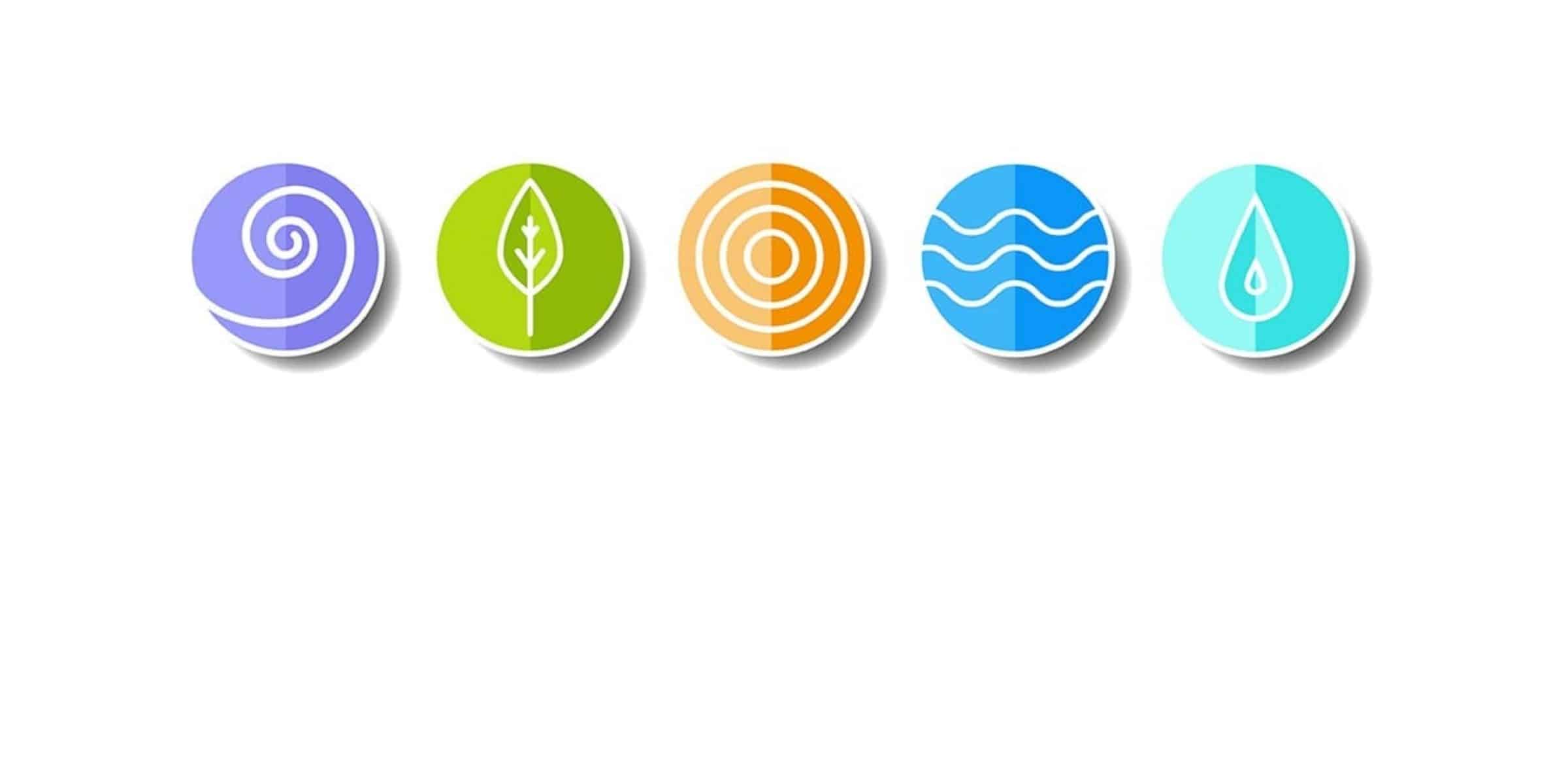In the six Darshanas, especially in Yoga and Ayurveda, the Pancha Mahabhutas (also known as the Five Great Elements) are considered fundamental principles that make up the physical universe, including all life. These elements are the basic building blocks of all matter and energy, and every yogic practice revolves around cleansing these elements or transcending beyond them. These Pancha Mahabhutas are as below:
Apa, or the Water element, is connected to fluidity and purification. It represents the various forms of water and fluids in the body and the environment. As seventy percent of the planet consists of water, the water element represents about seventy percent of our body, including fluids such as blood. Water contains memory; therefore, how we treat it changes the molecular structure of water, thereby making it conducive to our system. This is why rituals exist to treat, store, and contain water in a certain way.
Prithvi, or the Earth element, represents the solid state of matter and is associated with stability and endurance. To put it bluntly, we are the Earth; we are a few pounds when born, but we accumulate the nourishment from the Earth that makes us who we are. This is one of the primary reasons why all ancient, pagan cultures worshipped the Earth – she is the Mother, which allows us to be the life we are. This element is responsible for objects’ physical structure and form and is the basis of our life. This is why experiencing and being aware of the Earth and being thankful for the food we consume is essential in yoga and Ayurveda.
Agni, or the Fire element, sometimes called Tejas, symbolizes fire and heat. It is associated with digestion, energy generation, and transformation – an essential aspect for seekers and yoga practitioners. Agni is often personified as a Deity who is responsible for giving as well as taking life. Agni provides the necessary temperatures that enable various cellular and metabolic processes in our body, and one can see a majority of the mudras or hand gestures involve engaging the tip of the thumb – which represents Agni with other fingers to manipulate the energies in the body.
Vayu, or the Air element, is also fluidity and is mainly connected to prana’s movement, buoyancy, expansion, and circulation, or the vital energy that flows through the body. Vayu regulates energy flow and is essential in breathing and communication. Many Vayus flow through the body, but five main ones – Prana, Apana, Samana, Udana, and Vyana- govern different areas and aspects of activities, including respiration, excretion, and the movement of thoughts. Pranayama, or breath techniques and kriyas, are designed to purify and gain mastery over this element.
Akasha, also known as Ether or Space for lack of translation, is the element that contains all the above elements – it is the Akashic element that holds our existence in a womb. However, most of us must be aware of this element’s subtlety. Akasha cannot be translated as empty space but as a subtle, boundless dimension of physical existence. Akasha provides for our existence and allows the other elements to function within and outside, allowing the microcosm (us) and macrocosm (the larger existence) to be in sync. The Akashic element allows humans to perceive that which is beyond, and thus, various practices are designed where one “sees” beyond the five senses. For example, this element is more relevant to Sadhakas and yoga practitioners than a householder.
Like everything in the universe, our body is simply a play of these five elements, and how they are organized determines our constitution and functioning. According to Ayurveda, any imbalances in the elements could lead to physical and mental issues and ailments, and therefore, achieving harmony among them is necessary for overall well-being. This is why elemental Deities and temples dedicated to the different elements exist in India, especially in Tamil Nadu and Andhra Pradesh states. The five elements need to exist in harmony or cooperate within us. Therefore, sadhanas and processes are designed to purify these elements; this process is known as Bhuta Shuddi, so one can get to Bhuta Shiddi – which means mastery over these fundamental elements. Purification allows ease in the system – whether one is a seeker or immersed in daily life activities. These elements are nothing short of magic, and Yogic practices are instruments that let us see beyond the boundaries of physical existence.
References:
Sadhguru, J. (2020). Death: An Inside Story.
Kanojia, A. (2022). The Politics and Promise of Yoga: Contemporary Relevance of an Ancient Practice. Rowman & Littlefield.
